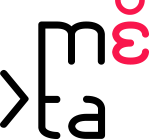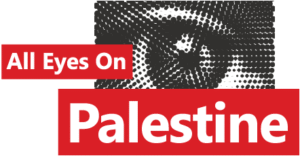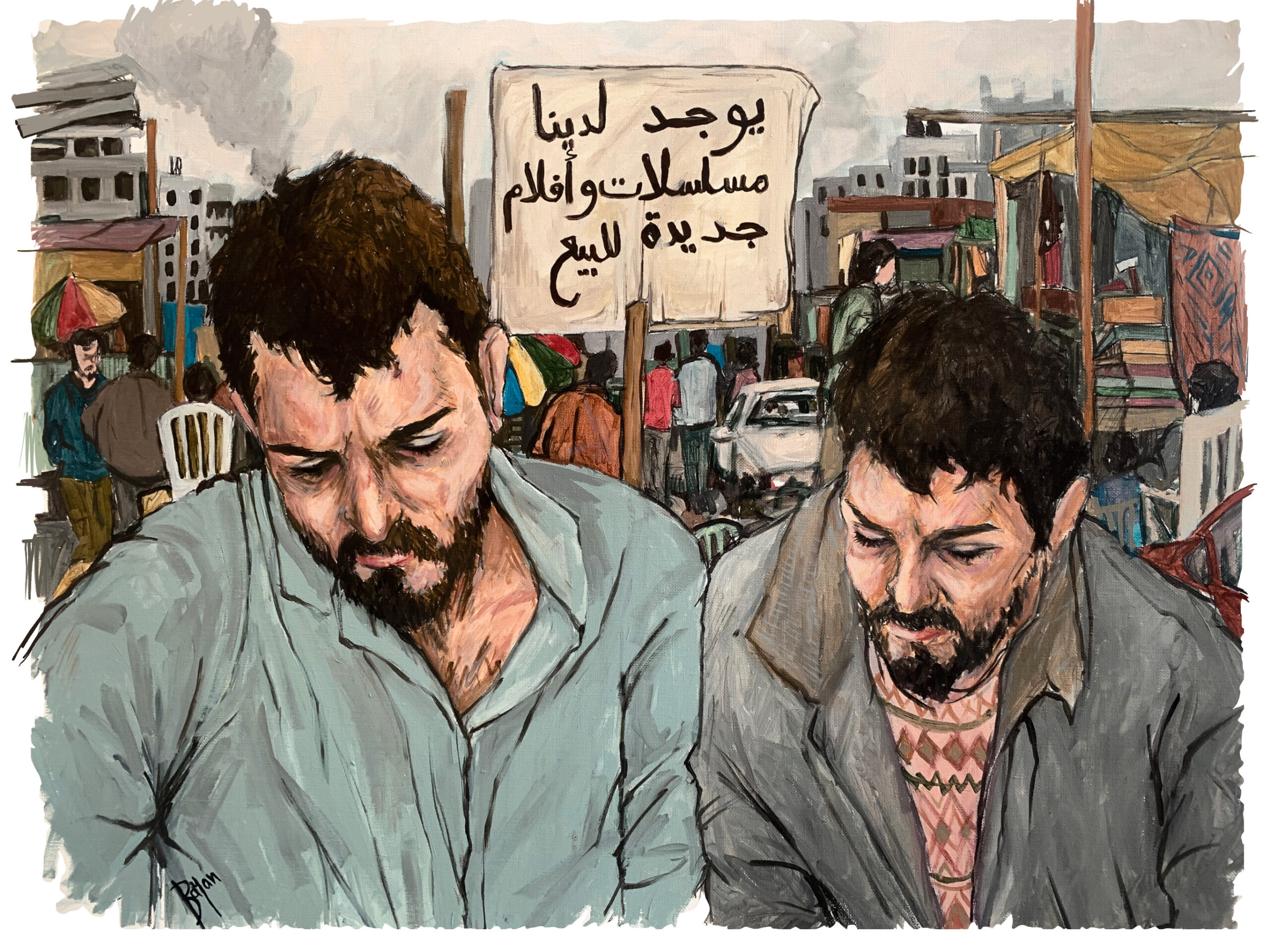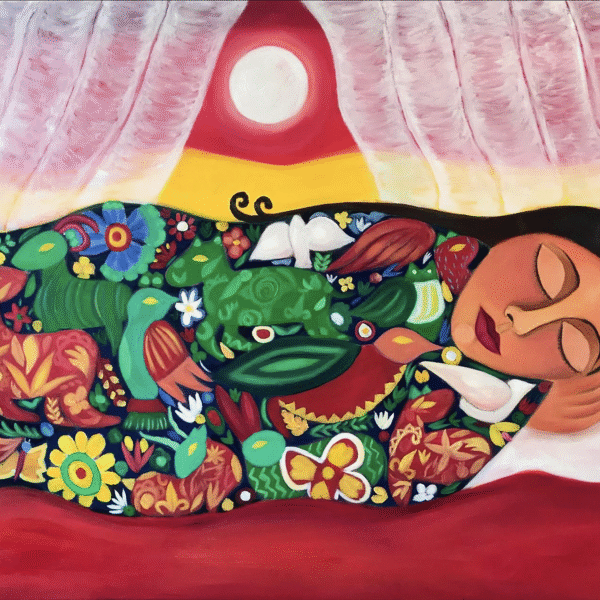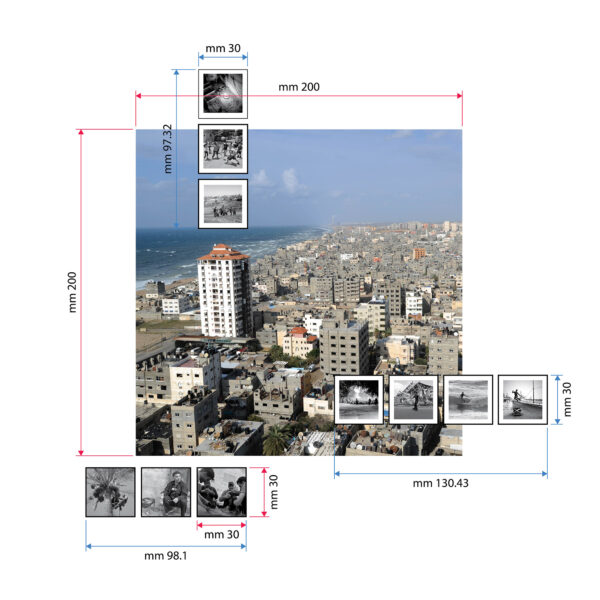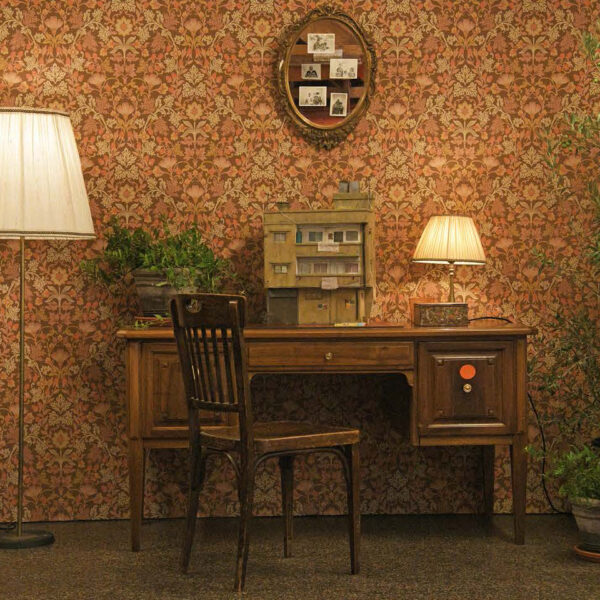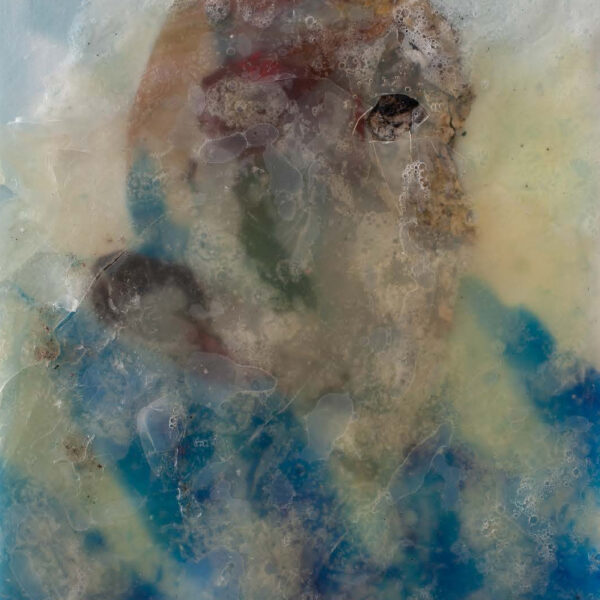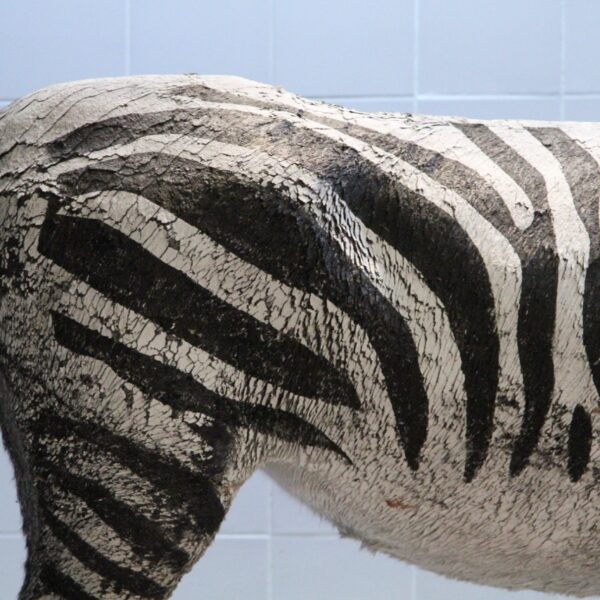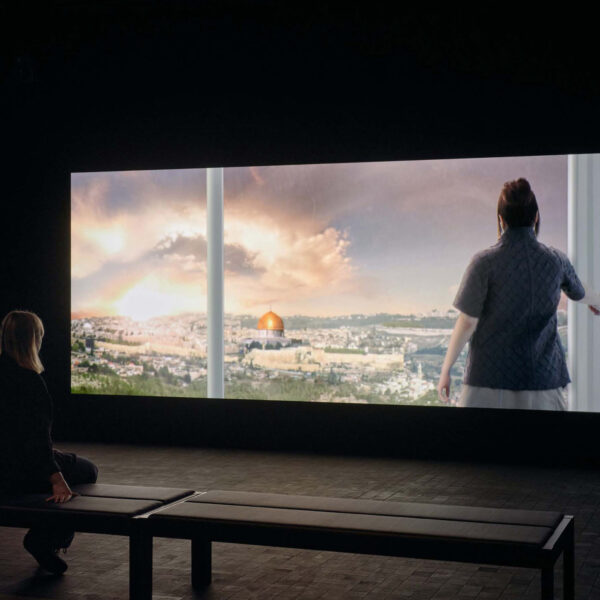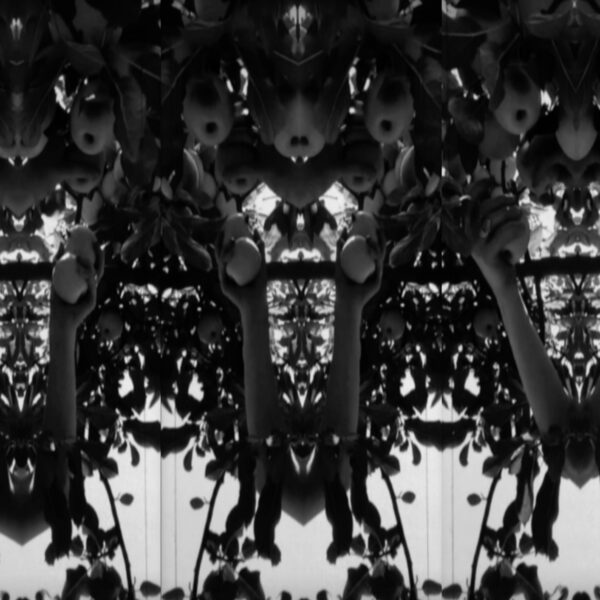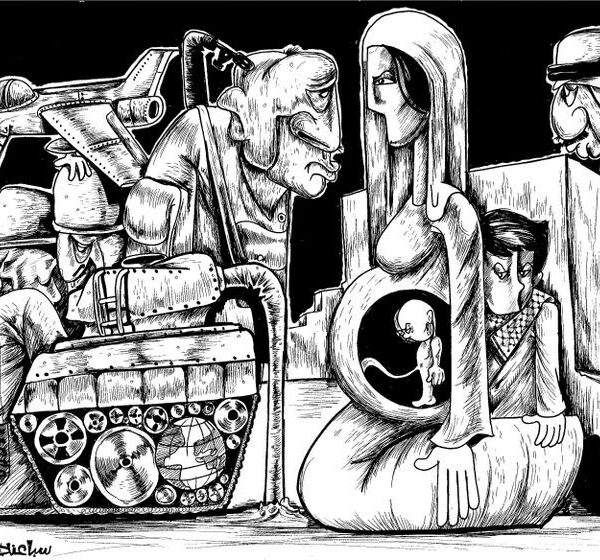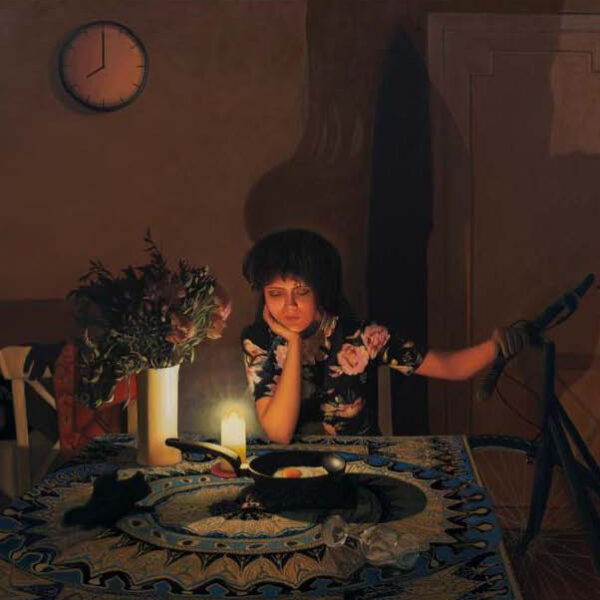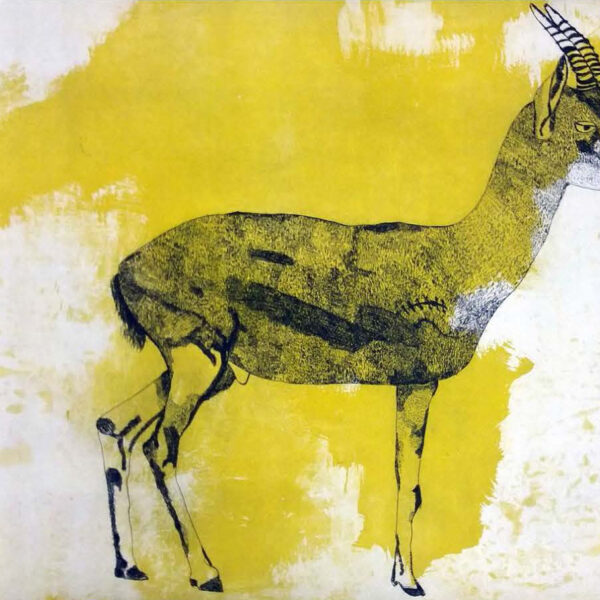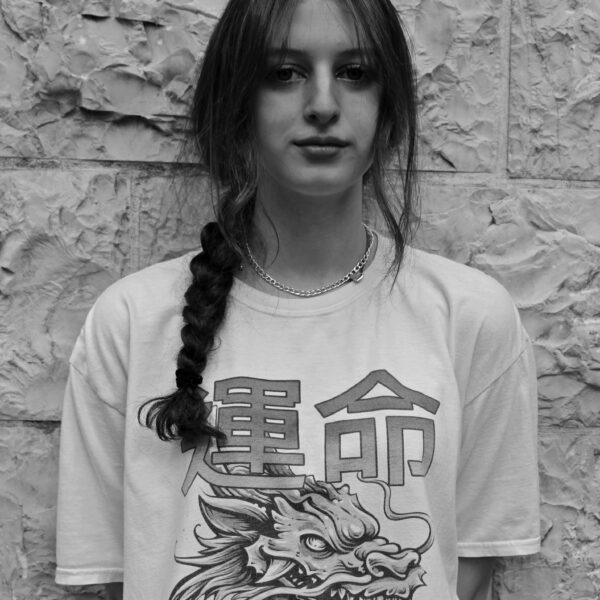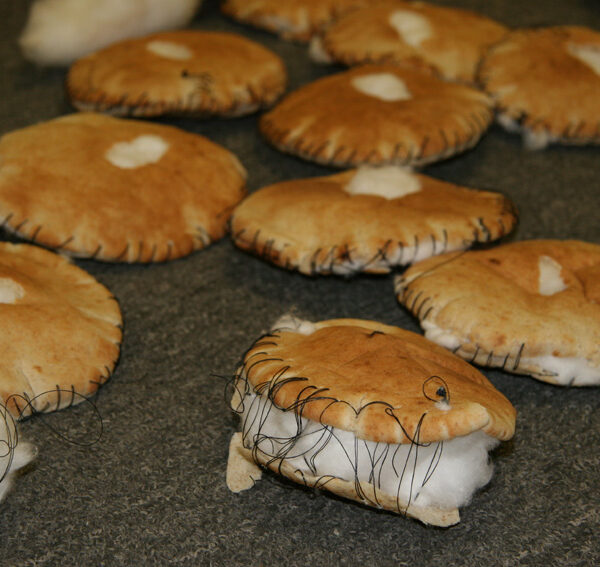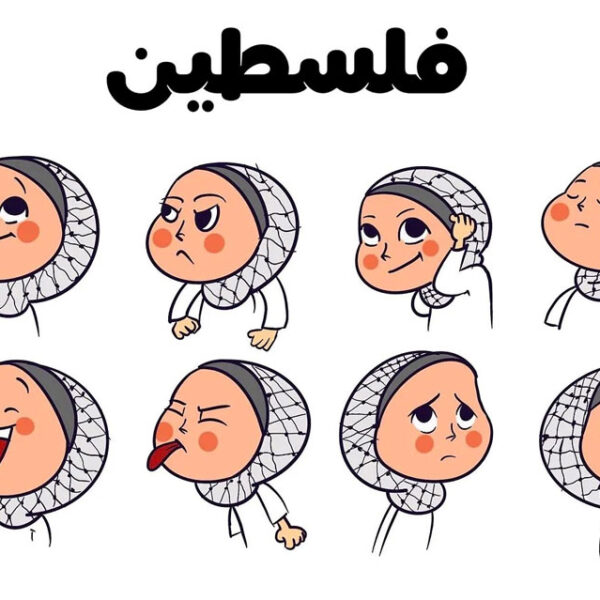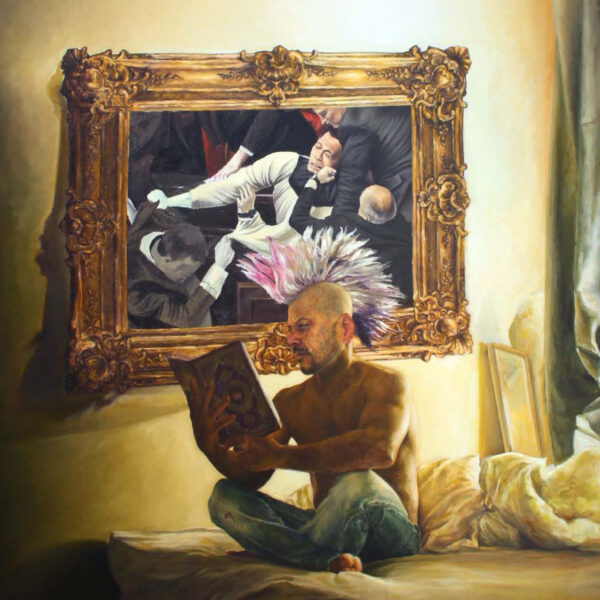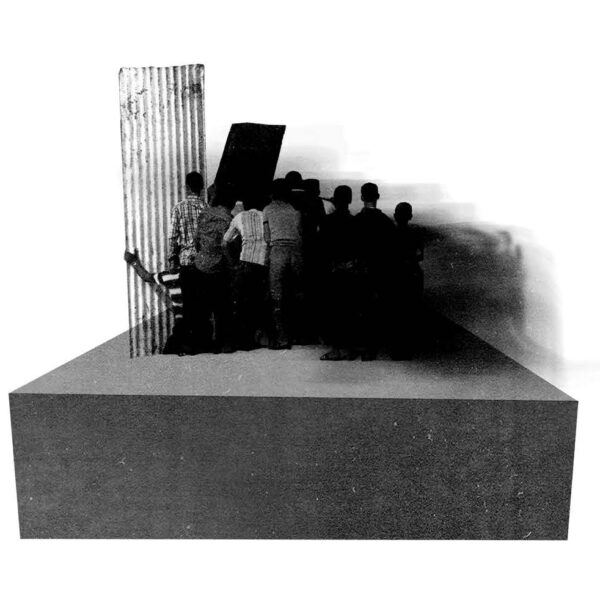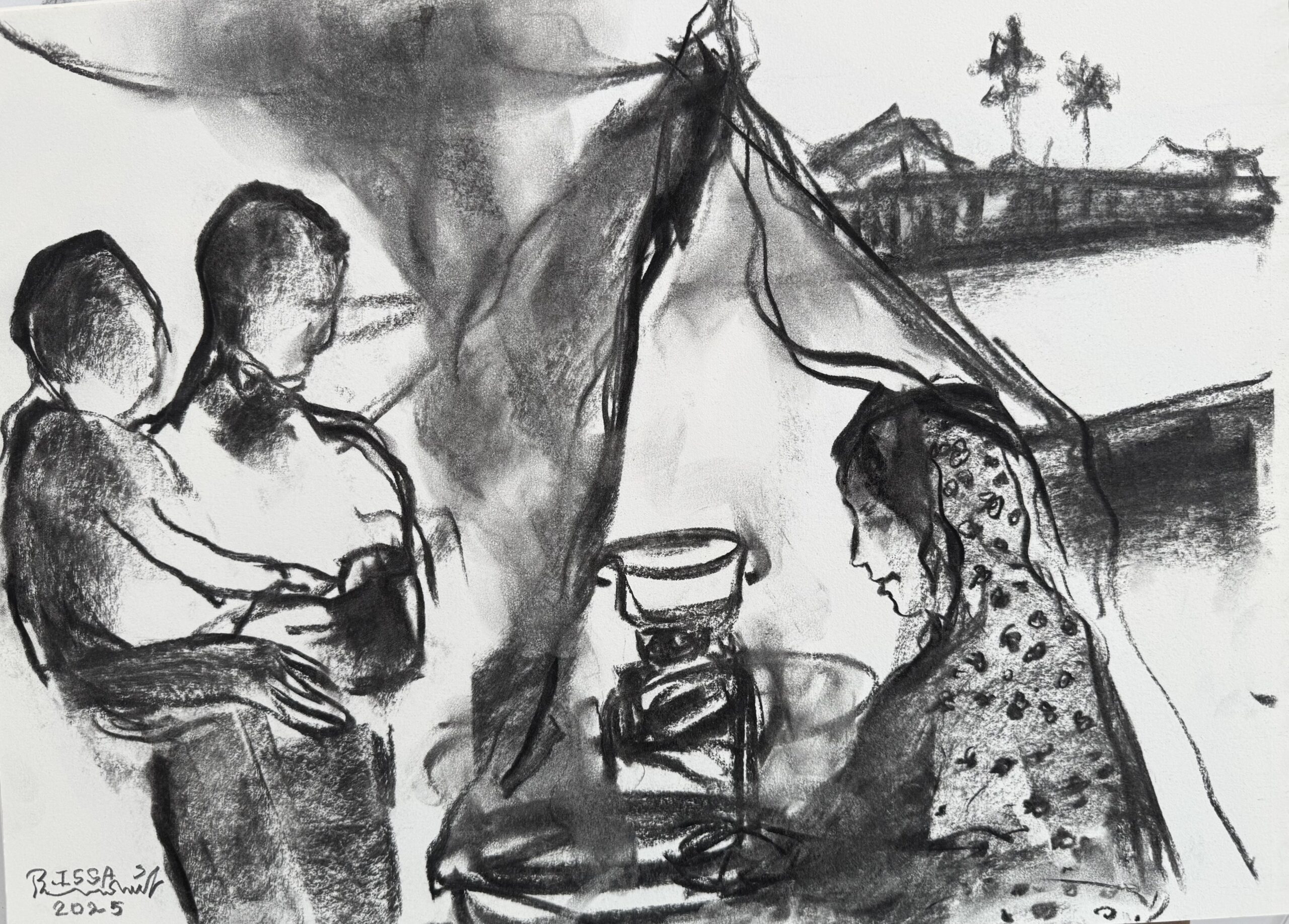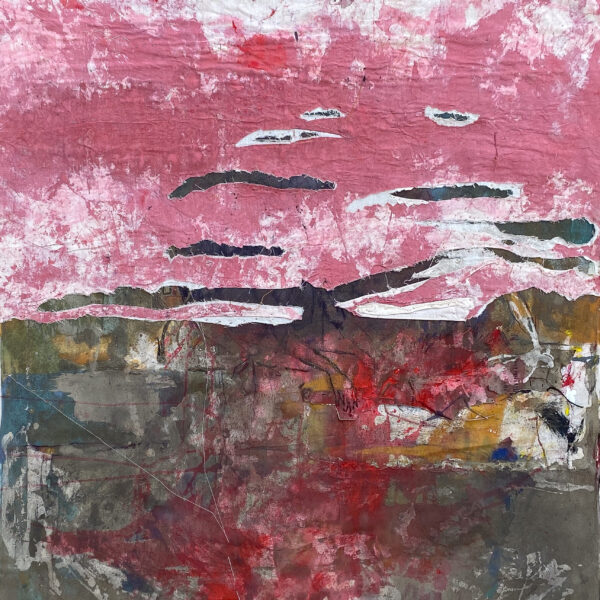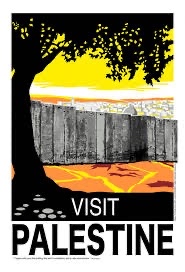Bayan Abu Nahla
Traces of Life, Imprints of Resistance
Bayan Abu Nahla (Gaza, 2001) is a Palestinian visual artist. Raised in Rafah, she experienced firsthand the wars, displacements, and destruction that mark the Gaza Strip. Her artistic practice, which includes painting, engraving, drawing, and graphic design, is deeply intertwined with political and cultural activism. After studying graphic design in Gaza, she now lives in France, where she continues to create and bear witness, transforming loss and exile into visual gesture and resilient memory.
Her work navigates between creative gesture and political resistance. Painting, engraving, drawing, graphic design: each expressive form becomes a language through which she tells the deep wound of her land and her generation. Art is born in an extreme condition—that of Gaza, a besieged, bombed, isolated territory—but from this same fractured space emerges a force of imagination that transforms memory into vision, and loss into an act of presence.
From a young age, Bayan experienced the conflict directly and traumatically. She endured blackouts, bombings, segregation, and knew the pain of both physical and symbolic destruction: in 2021, her family home was razed to the ground; two years later, in 2023, she lost most of her artistic archive and family memories. But from these voids, she drew the urgent need to etch the present, to affirm her identity through art.
In her works, often created with poor, locally-sourced materials—burnt paper, debris, natural pigments, stitched fabrics—personal pain intertwines with collective memory. The body is a central presence: broken, malnourished, mutilated bodies, faceless, hybrid figures in transit. These are not just symbols of endured violence, but containers of memory, of identities suspended between being and disappearing. Her images do not ask for compassion, but for responsibility.
The choice to stay, to teach, to share is part of a practice that is simultaneously artistic and political. In a territory where art is often perceived as a luxury, Bayan transforms it into a necessity. Each of her works is an act of cultural survival, a way to affirm the right to exist, to create, to tell one’s own story outside of dominant narratives. Her gaze seeks complicity, closeness, recognition.
After yet another displacement, Bayan left Gaza with her mother, finding refuge first in Egypt and then in France. But exile, even if physical, does not sever the bond with her land; on the contrary, it strengthens it. The themes of loss, distance, memory, and the body as a site of history now run through her production with even greater intensity.
Each of her works is an attempt to save what war destroys: bonds, images, the possibility of imagining a future. In a world that seems to want to condemn Gaza to silence, Abu Nahla responds with creation: a fragile and powerful gesture that leaves traces, opens spaces, and generates beauty even where everything seems destined for annihilation.
@ Elettra Stamboulis All rights reserved
Works
Artists
